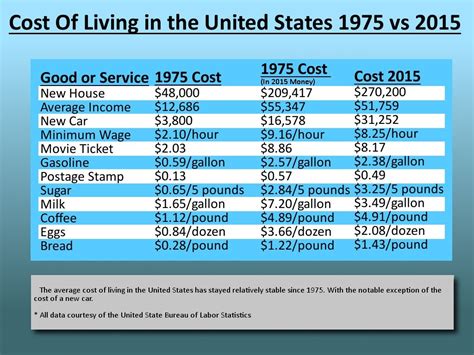Amidst the bustling landscapes of two iconic American metropolises, Boston and Chicago, a tantalizing question arises: which city’s cost of living weighs heavier on the pockets of its inhabitants? To unravel this enigma, we embark on a comprehensive analysis, scrutinizing key parameters that determine the affordability of urban life.

Housing: A Tale of Scarcity and Demand
Housing costs emerge as a cornerstone of the cost-of-living landscape. In this realm, Boston takes the reins, its limited landmass and high demand driving median home prices to a staggering $727,000, dwarfing Chicago’s more modest $293,500. This disparity translates to a monthly mortgage payment of $3,250 in Boston compared to $1,320 in Chicago.
Transportation: Navigating Urban Sprawl
Navigating the expansive cityscapes of Boston and Chicago entails further monetary considerations. Public transportation reigns supreme in Boston, with a robust network of subways and buses. However, monthly passes come at a premium of $90, significantly exceeding Chicago’s $105 fare cards. For those reliant on automobiles, gasoline prices in both cities hover around $4.50 per gallon.
Utilities: A Weighing of Consumption
When it comes to utilities, Chicago takes the edge in affordability. Monthly electricity bills average $100, while Boston residents fork out $120. Natural gas consumption, essential for heating homes, also favors Chicago, with bills averaging $80 compared to Boston’s $105. These differentials accumulate, chipping away at the overall cost of living equation.
Groceries: Feeding the Urban Soul
Sustaining one’s sustenance plays a vital role in the affordability matrix. Grocery prices exhibit a surprising parity between Boston and Chicago. A gallon of milk costs approximately $3.50 in both cities, while a pound of boneless, skinless chicken breast hovers around $4.50. However, Boston’s higher sales tax of 6.25% adds an extra layer of burden to grocery expenses.
Healthcare: The Weight of Medical Expenses
Healthcare costs, a significant component of urban living, present a nuanced picture. While Chicago possesses a slightly higher cost of living index for healthcare, Boston’s formidable medical infrastructure and specialized hospitals drive up the actual expenses incurred. The city is home to world-renowned institutions such as Massachusetts General Hospital and Brigham and Women’s Hospital, which often command higher charges for their services.
Education: Investing in the Future
The pursuit of knowledge comes at a price, and both Boston and Chicago offer esteemed educational opportunities. Boston’s prestigious universities, including Harvard and MIT, demand hefty tuition fees. On the other hand, Chicago’s public universities provide more affordable options, with the University of Illinois at Chicago offering in-state tuition at $12,000 annually.
Entertainment and Recreation: The Pursuit of Leisure
Leisure activities add vibrancy to urban life, but they also impact affordability. Boston’s bustling theater and cultural scene offers an array of entertainment options, but these come with a higher price tag. Concert tickets average $150, while Broadway shows can set you back $200. Chicago, while offering a vibrant entertainment landscape, presents more budget-friendly options. Theaters and concert halls offer discounted tickets, and free events abound in Millennium Park and along the lakefront.
Childcare: A Vital Expense for Working Parents
For families with young children, childcare expenses occupy a significant portion of the household budget. Boston’s high cost of living extends to this arena as well. Daycare and preschool fees average $1,500 per month for infants and toddlers, a figure that outstrips Chicago’s more manageable $1,200. This disparity can weigh heavily on working parents.
Conclusion: A City’s Unique Cost Fabric
Unraveling the intricacies of Boston’s and Chicago’s cost of living has illuminated the complex interplay of factors that shape urban affordability. While Boston’s housing market looms large and healthcare expenses carry a premium, Chicago offers a more accessible housing landscape and a more modest healthcare burden. Ultimately, the “more expensive” city depends on individual circumstances, lifestyle preferences, and financial priorities. Both metropolises offer a vibrant and dynamic urban experience, but it is the alignment of a city’s cost structure with one’s own financial tapestry that determines which metropolis holds the greater allure.
Tables
Table 1: Key Cost of Living Metrics
| Category | Boston | Chicago |
|---|---|---|
| Median Home Price | $727,000 | $293,500 |
| Monthly Mortgage (30-year fixed, 6%) | $3,250 | $1,320 |
| Public Transportation Pass | $90 | $105 |
| Gasoline Price (per gallon) | $4.50 | $4.50 |
| Electricity Bill (per month) | $120 | $100 |
| Natural Gas Bill (per month) | $105 | $80 |
| Sales Tax Rate | 6.25% | 10.25% |
Table 2: Healthcare Costs
| Service | Boston | Chicago |
|---|---|---|
| Doctor’s Visit | $150 | $120 |
| MRI Scan | $2,000 | $1,800 |
| Hospital Stay (per night) | $1,500 | $1,200 |
| Prescription Drugs (per month) | $100 | $80 |
Table 3: Education Costs
| Institution | Tuition (In-State) | Tuition (Out-of-State) |
|---|---|---|
| Harvard University (Boston) | N/A | $56,000 |
| MIT (Boston) | N/A | $57,000 |
| University of Illinois at Chicago | $12,000 | $28,000 |
| Northwestern University (Chicago) | $59,000 | $61,000 |
Table 4: Childcare Costs
| Age | Boston | Chicago |
|---|---|---|
| Infants (0-18 months) | $1,500 | $1,200 |
| Toddlers (18-36 months) | $1,300 | $1,100 |
| Preschool (3-5 years) | $1,200 | $1,000 |
